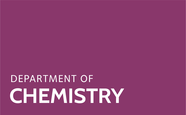The desire to study biology in situ has been aided by many imaging techniques. Among these, X-ray fluorescence (XRF) mapping permits observation of elemental distributions in a multichannel manner. However, XRF imaging is underused, in part, because of the difficulty in interpreting maps without an underlying cellular ‘blueprint’; this could be supplied using contrast agents. Carbon nanotubes (CNTs) can be filled with a wide range of inorganic materials, and thus can be used as ‘contrast agents’ if biologically absent elements are encapsulated. Here we show that sealed single-walled CNTs filled with lead, barium and even krypton can be produced, and externally decorated with peptides to provide affinity for sub-cellular targets. The agents are able to highlight specific organelles in multiplexed XRF mapping, and are, in principle, a general and versatile tool for this, and other modes of biological imaging.
nanobiotechnology
,organelles
,molecular medicine
,flourescence imaging
,chemical tools




